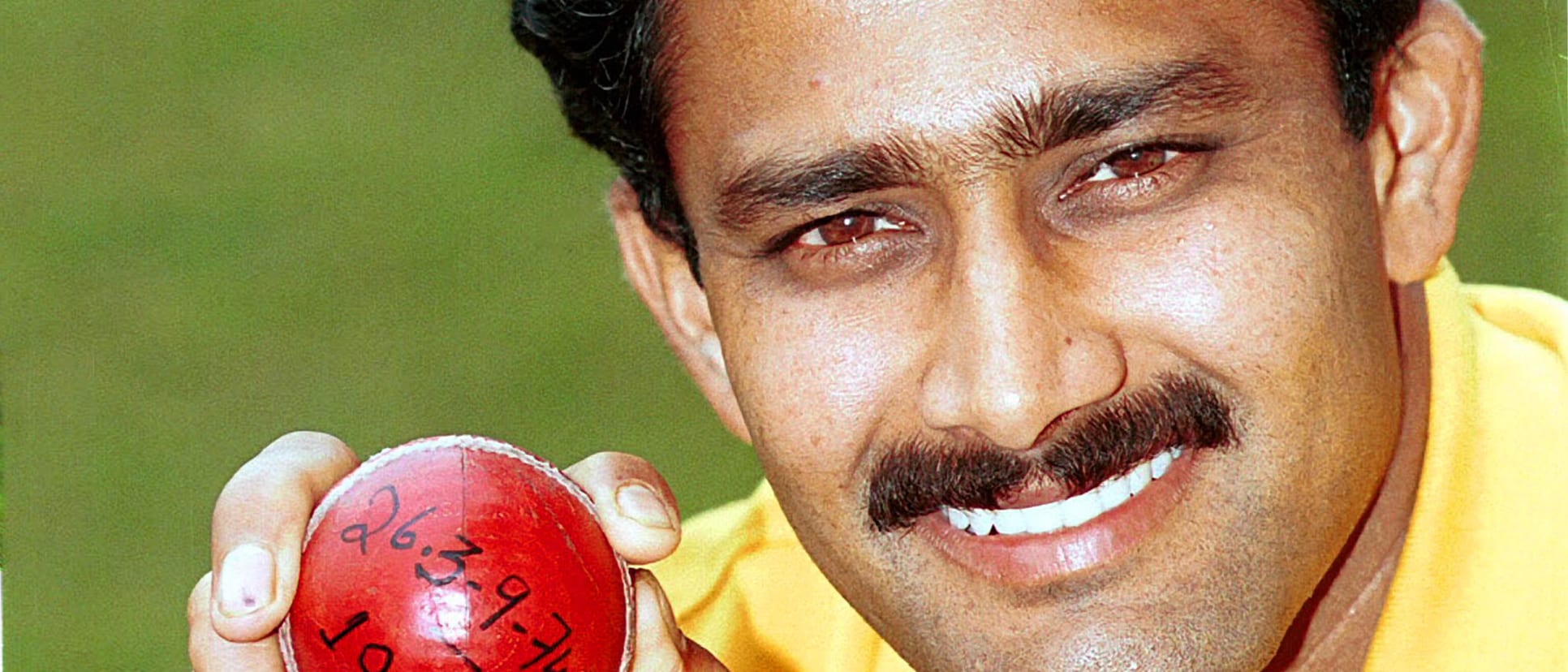The Ultimate Test Series: The final encounter
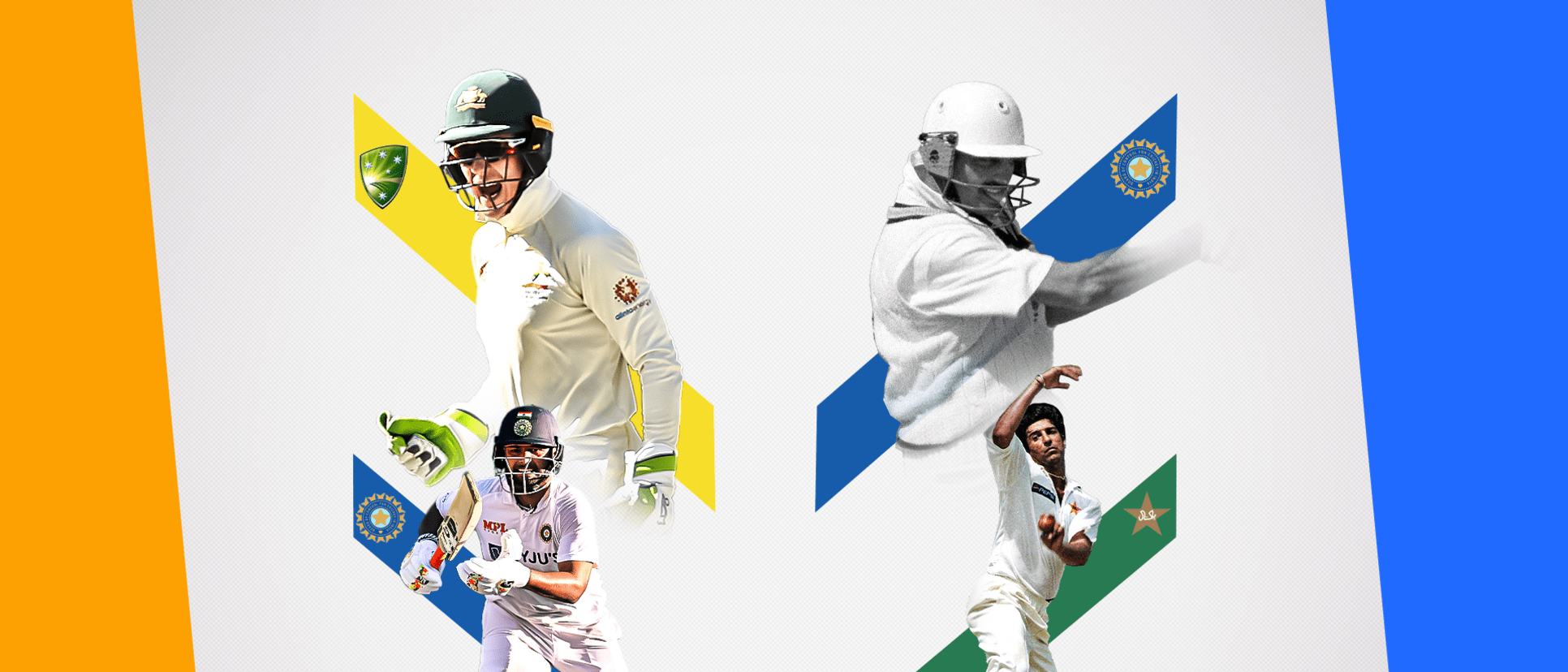
***
Ahead of the ICC World Test Championship Final, we're looking to crown the Ultimate Test Series.
Late last month we presented you a shortlist of 16 series and in the days that followed your votes whittled it down to a final two.
Now it's your chance to vote in the final.
Will it be the 2020/21 Border-Gavaskar thriller or 1999's two-Test classic between India and Pakistan?
Read on for a Test-by-Test wrap of both series.
Vote across our social channels 🗳️ #TheUltimateTestSeries
— ICC (@ICC) June 7, 2021
Australia vs India, 2020/211-2 to India across four Tests
First Test, Adelaide Oval
Facing each other in a day-night Test for the first time at Adelaide Oval, the curtain-raiser between Australia and India was the perfect start to a series that had it all.
Electing to bat first, India looked on course for a significant first innings total, having marched to 188/3, with captain Virat Kohli in supreme touch on 74. Instead, they’d be bowled out for 244 early on day two, losing seven for 56 after Kohli was run out in a mix-up with Ajinkya Rahane.
Nevertheless, with Ravichandran Ashwin leading the way with a four-wicket haul, they took control of the match by bowling Australia out for 191 in their first innings. It was actually a total they should have kept them well below, with Marnus Labuschagne (47) and Tim Paine (73*) both enjoying multiple lives, and the Australians recovering from 139/8.
The Paine-led fightback proved to be the catalyst of a stunning comeback, with Josh Hazlewood’s unforgettable spell of 5/8 seeing India rolled for 36 and paving the way for an eight-wicket victory for the hosts.

Second Test, MCG
With Kohli returning home for the birth of his first child following the Adelaide Oval Test and Mohammed Shami suffering a series-ending injury, few if any gave India much chance of bouncing back at the MCG.
But under the captaincy of Rahane, the Indians roared back in the Boxing Day Test. Stepping up in the absence of Shami, Jasprit Bumrah took four wickets and the in-form Ashwin picked up another three – including Steve Smith for a rare duck – as the touring team bowled the hosts out for 195 after losing the toss.
In India’s first innings, Rahane stepped up big time, scoring a brilliant 112 off 223 in a total of 326, with debutant Shubman Gill (45) and Ravindra Jadeja (57) both impressing.
Another stellar performance from the attack from there set up a simple chase of 70 for the Indians and suddenly the series was tied at 1-1.
The victory did come at a cost, however, with Umesh Yadav suffering a series-ending injury. That left India without the services of three frontline quicks, following Shami's injury at Adelaide and Ishant Sharma's before the tour.
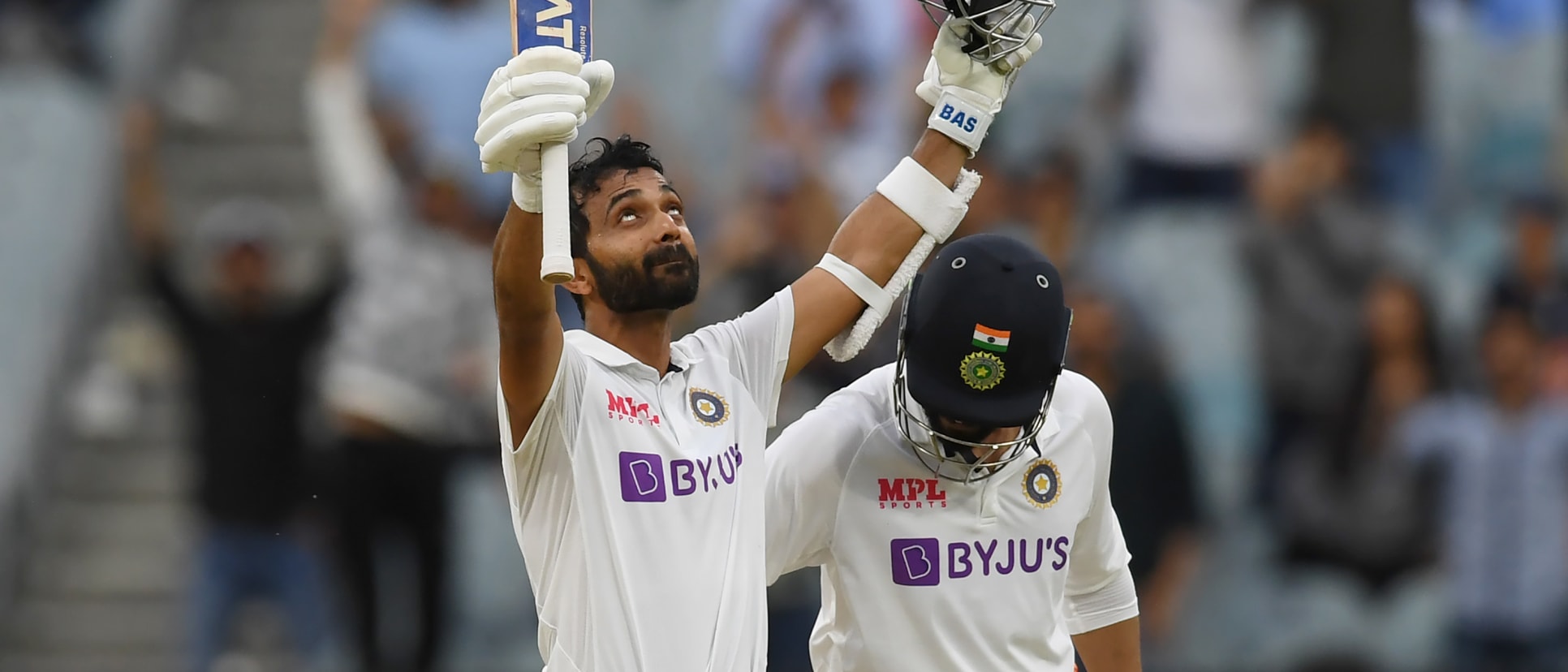
Third Test, SCG
At Adelaide and Melbourne, India had managed what few in cricket have in the past decade. They had kept Smith quiet.
At the SCG, Smith returned to form with a vengeance, scoring his first century since the 2019 Ashes – a brilliant 131 that was only ended by a direct hit from Jadeja as he looked to pick up bonus runs at the end of Australia’s innings. In their most convincing innings of the series to date, the Australians had put up a total of 338, with key contributions from Marnus Labuschagne (91) and debutant Will Pucovski (62).
India only managed 244 in reply and by the time Australia finished their second innings the tourists required 407 runs to win with the better part of four sessions to survive.
With India 98/2 going into day five, all four results were still on the cards but when Nathan Lyon removed Rahane early, an Australian victory seemed inevitable. However, on the back of a rapid 97 from Rishabh Pant and a patient 77 from Pujara, the Indians managed to open up the possibility of victory.
When both men fell before the final session, the match was back in Australia’s court. With Jadeja nursing a broken thumb but padded up on the team balcony, the Australians knew they were only one wicket away from exposing a vulnerable Indian tail. To make matters worse for India, the two men in were both battling injuries themselves, with Hanuma Vihari pinging a hamstring and Ashwin his back.
Somehow, someway they held solid to force the draw.

Fourth Test
The heroic effort at the SCG came at a serious toll for India. Vihari, Ashwin, Jadeja and Bumrah were all ruled out of the Gabba encounter, as was squad member KL Rahul.
Australia meanwhile was heading to a ground where it had not tasted defeat in 32 years. Suffice to say, the odds were against India in the series decider.
Things were looking grim for the Indians at 186/6 in their first innings reply to Australia’s total of 369, only for debutant Washington Sundar – picked for his off-spin – and second-matcher Shardul Thakur to both score half-centuries to drag them to 336.
A five-wicket haul from Mohammed Siraj and four wickets from Thakur saw Australia bowled out for 294 and India went into day five chasing 328 to win.
Their hopes were rocked when Rohit Sharma fell for seven, but with Gill (91) attacking from one end and Pujara (56) defending from the other, all four results remained a possibility. Going into the final session of the series, India needed 145 runs to win and Australia still needed seven more wickets.
The introduction of the second new ball paid immediate dividends for Australia as Cummins removed Pujara and then six overs later Mayank Agarwal. However, with Pant at the crease, the runs were flowing quickly.
One of the heroes at the SCG, Pant stepped up to take India home in the company of the tail, scoring an unbeaten 89 and finishing the match and the series with a glorious drive to long-off.
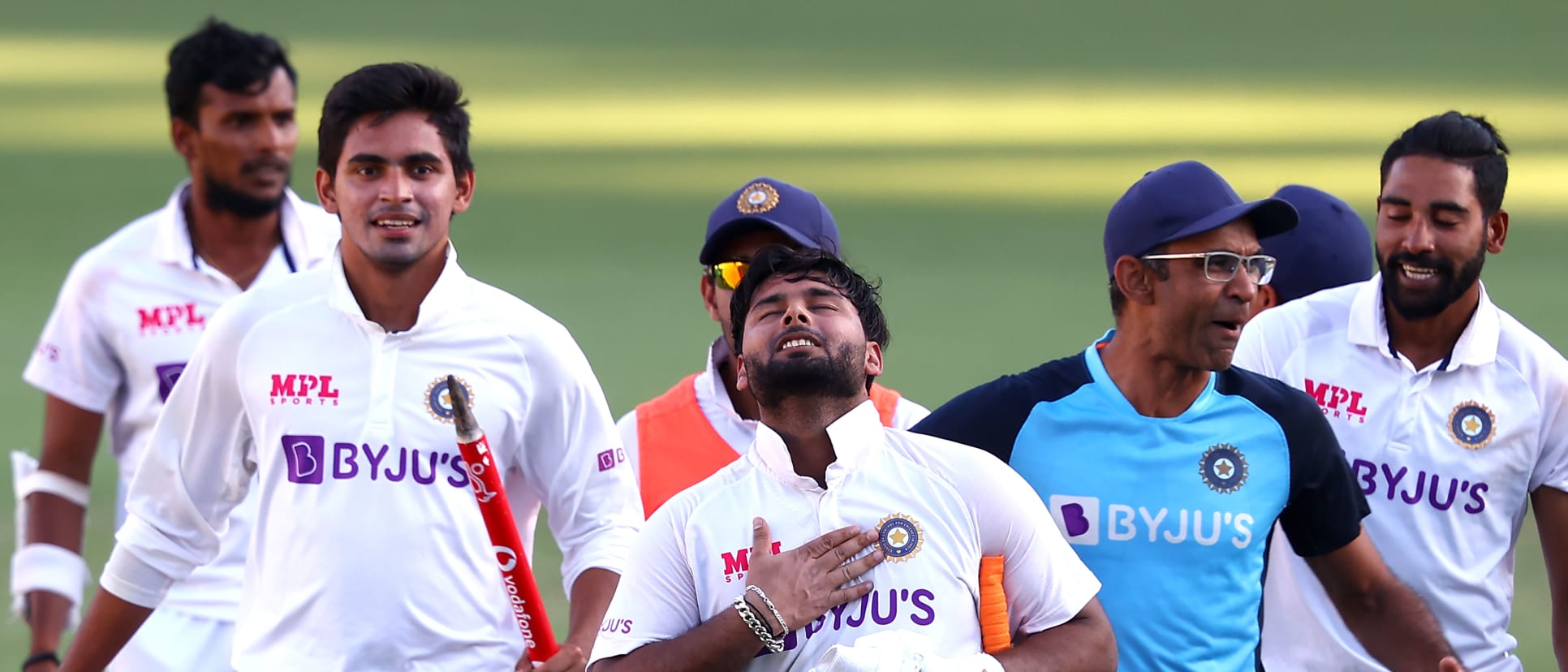
India vs Pakistan, 19991-1 across two Tests
First Test, Chennai
Before a delivery had been bowled, the India-Pakistan encounter at Chennai was a significant event. It was the first Test match between the two teams since 1989.
As things turned out, the match wound up a thriller.
With Anil Kumble in his pomp, the hosts bowled Pakistan out for 238 in their first innings. The leg-spinner helped himself to six wickets, claiming the last four in the innings after Pakistan were 214/6. With India batting last in the contest, it was pivotal they kept Pakistan to a low first-innings score and Kumble had allowed them to do just that.
However, with Saqlain Mushtaq and Shahid Afridi in the opposition, the Indians failed to build a significant first-innings lead. With Mushtaq taking five wickets and Afridi three, India was held to just 254.
It was from here that the match really came to life. Throwing caution to the wind, Afridi blasted 141 runs opening the batting for Pakistan, carrying them to a total of 286. In truth, the Pakistanis would have hoped for so much more having at one stage been 275/4. Instead, they had to settle for less after being torn apart by a six-wicket haul from Venkatesh Prasad.
Fortunately for Pakistan that would end up being the second most talked about collapse of the match.
Chasing 271 to win on a wearing Chennai surface was always going to prove a difficult task and things looked grim for India as they slipped to 82/5. Their saving grace was the presence of Sachin Tendulkar at the crease.
Out for a duck in the first innings, Tendulkar’s contribution going into the match’s final chapter was the three wickets he had snared. On day four, he stepped up magnificently with the bat.
In the company of wicketkeeper Nayan Mongia, he put India firmly on track in a 136-run stand. Mongia’s fall for 52 when they needed 53 runs to win looked a major banana skin for the Indians, but with all-rounder Sunil Joshi standing firm a wearying Tendulkar seemed to have the match in control.
Instead, Mushtaq triggered one of the most incredible comebacks in cricket history. With India just 17 runs away from victory, Tendulkar’s masterclass came to an end as he fell to Mushtaq for 136. From a position of strength at 254/6, the Indians collapsed to 258 all-out to hand Pakistan victory in an absolute rollercoaster of a match.
Such was the spectacle of what they had seen that the patrons at MA Chidambaram Stadium took to their feet to applaud the visiting side as they completed a lap of honour.
Tendulkar, for his part, was named Player of the Match despite finishing on the losing side.
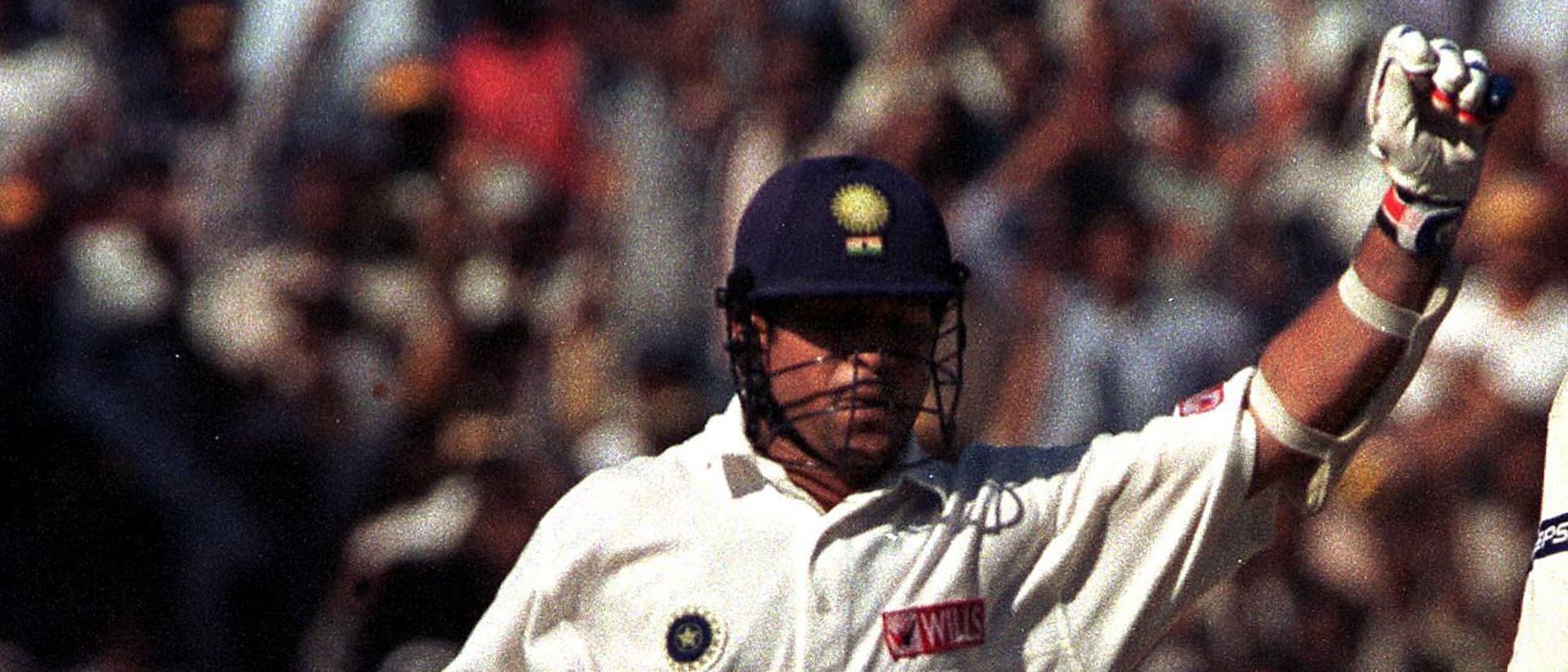
Second Test, Delhi
Needing to win the second Test to avoid series defeat, India’s hopes took a hit when they were bowled out for 252 in their first innings. Once again it was Mushtaq who did the damage, taking 5/94.
In response, Kumble and a young Harbhajan Singh stepped up for India, taking four and three wickets respectively to hold Pakistan down to a total of 172.
From there, India took control of the match. Off the back of a patient 96 from Sadagoppan Ramesh and an unbeaten 62 from Sourav Ganguly, they marched to a total of 339, setting Pakistan an unfathomable target of 420 to win.
For 24 overs, that chase almost seemed possible. With Saeed Anwar in good touch (69) and Afridi (41) coming off a century in the previous Test, Pakistan enjoyed a 110-run opening stand. They would end up being bowled out for 207 and the Indians had Kumble to almost entirely to thank for that. The towering leg-spinner became just the second Test bowler to take all 10 wickets in an innings that day in Delhi.
He started the collapse by taking Afridi’s edge after lunch and with his very next delivery he trapped Ijaz Ahmed in front. Inzamam survived the hat-trick ball but four overs later was back in the pavilion after playing Kumble onto his stumps. Just two balls later, Kumble had a fourth as Mohammad Yousuf perished lbw for a duck. By the end of the afternoon session he had also taken the wickets of Moin Khan and Anwar.
After the respite of tea, Pakistan’s torment at the hands of Kumble continued. On a pitch offering variable bounce, Saleem Malik was bowled attempting to pull the leg-spinner. Shortly after Kumble’s trademark awkward bounce had Mushtaq Ahmed caught at gully and with his next delivery the spinner trapped Saqlain Mushtaq in front. He would again be denied the hat-trick, but there was no refusing him the 10-for as he snared Wasim Akram to finish the match.
It was only India’s fifth Test victory over Pakistan and their first since 1980.
